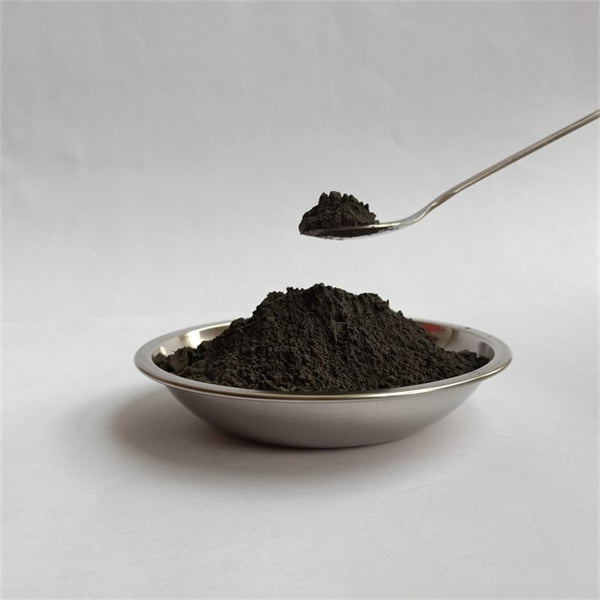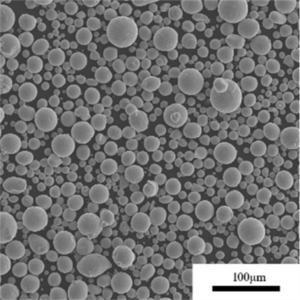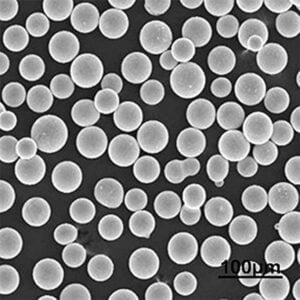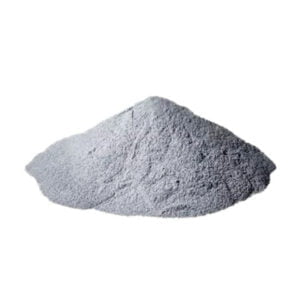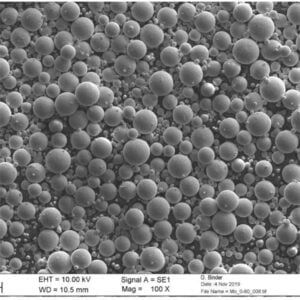310 Pulver
310 pulver är ett austenitiskt rostfritt stålpulver som innehåller höga halter av krom, nickel och kväve för förbättrade mekaniska egenskaper och korrosionsbeständighet. Det ger en utmärkt kombination av styrka, hårdhet, seghet och slitstyrka.
Låg MOQ
Tillhandahålla låg minsta orderkvantitet för att möta olika behov.
OEM & ODM
Tillhandahålla kundanpassade produkter och designtjänster för att tillgodose unika kundbehov.
Tillräckligt lager
Säkerställa snabb orderhantering och tillhandahålla tillförlitlig och effektiv service.
Kundtillfredsställelse
Tillhandahålla högkvalitativa produkter med kundnöjdhet i fokus.
dela denna produkt
Innehållsförteckning
Översikt över 310 pulver
310 pulver är ett austenitiskt rostfritt stålpulver som innehåller höga halter av krom, nickel och kväve för förbättrade mekaniska egenskaper och korrosionsbeständighet. Det ger en utmärkt kombination av styrka, hårdhet, seghet och slitstyrka.
Viktiga egenskaper och fördelar med 310 pulver är bl.a:
310 Pulvrets egenskaper och karaktäristik
| Fastigheter | Detaljer |
|---|---|
| Sammansättning | Legering Fe-25Cr-20Ni-0,25N |
| Täthet | 8,1 g/cc |
| Partikelns form | Oregelbunden, kantig |
| Storleksintervall | 10-150 mikrometer |
| Skenbar densitet | Upp till 50% av verklig densitet |
| Flytbarhet | Måttlig |
| Styrka | Mycket hög för ett pulver i 300-serien |
| Slitstyrka | Utmärkt tack vare arbetshärdning |
310 pulver används ofta i applikationer som kräver hårdhet, slitstyrka och korrosionsbeständighet, t.ex. ventildelar, axlar, lagerburar, fästelement, kirurgiska instrument etc.
310 Pulversammansättning
Typisk sammansättning av 310 rostfritt stålpulver:
310 Pulversammansättning
| Element | Vikt % |
|---|---|
| Järn (Fe) | Balans |
| Krom (Cr) | 24-26% |
| Nickel (Ni) | 19-22% |
| Kväve (N) | 0.2-0.4% |
| Kol (C) | 0,25% max |
| Kisel (Si) | 1,5% max |
| Mangan (Mn) | 2% max |
| Svavel (S) | 0,03% max |
| Fosfor (P) | 0,045% max |
- Järn ger den ferritiska matrisen och duktiliteten
- Krom och nickel förbättrar korrosionsbeständigheten
- Kväve ger förstärkning av solid lösning
- Kol, kisel, mangan kontrolleras som trampelement
Den optimerade sammansättningen ger en utmärkt kombination av styrka, hårdhet, korrosionsbeständighet och kostnad.

310 Pulver Fysikaliska egenskaper
310 Pulver Fysikaliska egenskaper
| Fastighet | Värden |
|---|---|
| Täthet | 8,1 g/cc |
| Smältpunkt | 1370-1400°C |
| Elektrisk resistivitet | 0,8 μΩ-m |
| Termisk ledningsförmåga | 12 W/mK |
| Termisk expansion | 11 x 10^-6 /K |
| Maximal driftstemperatur | 1150°C |
- Hög densitet jämfört med ferritiska rostfria stål
- Bibehåller utmärkt hållfasthet vid förhöjda temperaturer
- Resistiviteten är högre än för rent järn eller kolstål
- Lägre värmeledningsförmåga än kolstål
- Klarar kontinuerlig drift upp till 1150°C
De fysikaliska egenskaperna gör 310 lämplig för högtemperaturapplikationer som kräver hårdhet, styrka och korrosionsbeständighet.
310 Pulver Mekaniska egenskaper
310 Pulver Mekaniska egenskaper
| Fastighet | Värden |
|---|---|
| Draghållfasthet | 760-900 MPa |
| Sträckgräns | 450-550 MPa |
| Töjning | 35-40% |
| Hårdhet | 32-38 HRC |
| Slaghållfasthet | 50-100 J |
| Elasticitetsmodul | 190-210 GPa |
- Mycket hög hållfasthet för rostfritt stål i 300-serien
- Utmärkt hårdhet och slitstyrka
- Hög seghet och slaghållfasthet
- Hållfastheten kan ökas ytterligare genom kallbearbetning
- Kallbearbetning förbättrar också hårdheten avsevärt
Egenskaperna ger en utmärkt kombination av styrka, hårdhet och seghet som krävs i många slitstarka applikationer.
310 Pulvertillämpningar
Typiska användningsområden för 310 rostfritt stålpulver är bl.a:
310 Pulvertillämpningar
| Industri | Exempel på användningsområden |
|---|---|
| Petrokemisk industri | Ventiler, pumpar, axlar |
| Livsmedelsförädling | Extruderskruvar, knivar |
| Fordon | Kugghjul, axlar, fästelement |
| Tillverkning | Pressverktyg, lagerburar |
| Medicinsk | Kirurgiska instrument, implantat |
Vissa specifika produktanvändningar:
- Höghållfasta fästelement, bultar, muttrar
- Pump- och ventilkomponenter som tätningar, axlar
- Extruderskruvar och blad för livsmedelsbearbetning
- Pressverktyg och formar med hög hårdhet
- Blandningsutrustning, pumphjul som kräver slitstyrka
Den utmärkta kombinationen av egenskaper gör att 310 används i stor utsträckning för specialapplikationer inom olika branscher.
310 Pulver Specifikationer
Relevanta specifikationer och standarder:
310 Pulverstandarder
| Standard | Beskrivning |
|---|---|
| ASTM A276 | Standardspecifikation för stång och profiler av rostfritt stål |
| ASTM A314 | Standard för bockade rör och slangar av rostfritt stål |
| ASME SA-479 | Specifikation för rör av rostfritt stål |
| AMS 5517 | Glödgat korrosionsbeständigt stål, stång, tråd, smide |
| AMS 5903 | Stång, tråd och smide av utskiljningshärdat rostfritt stål |
Dessa standarder definierar:
- Gränsvärden för kemisk sammansättning för legering 310
- Tillåtna föroreningsnivåer som S, P
- Nödvändiga mekaniska egenskaper
- Godkända produktionsmetoder
- Protokoll för test av efterlevnad
- Korrekt förpackning, märkning och dokumentation
Genom att uppfylla certifieringskraven säkerställs pulvrets lämplighet.
310 Pulver Partikelstorlekar
310 Partikelstorleksfördelning för pulver
| Partikelstorlek | Egenskaper |
|---|---|
| 10-45 mikrometer | Ultrafin kvalitet för hög densitet och ytfinish |
| 45-150 mikrometer | Grov kvalitet ger god flytbarhet |
| 15-150 mikrometer | Standardkvalitet för pressning och sintring |
- Finare partiklar möjliggör större förtätning under sintringen
- Grovare pulver flyter bättre och fyller formhålorna jämnt
- Storleksintervallet skräddarsys utifrån de egenskaper som krävs för den slutliga detaljen
- Både gas- och vattenatomiserade pulver finns tillgängliga
Genom att kontrollera partikelstorleksfördelningen kan man optimera bearbetningsbeteendet och den slutliga detaljens prestanda.
310 Pulver skenbar densitet
310 Pulver skenbar densitet
| Skenbar densitet | Detaljer |
|---|---|
| Upp till 50% av verklig densitet | För oregelbunden pulvermorfologi |
| 4,5-5,5 g/cc typiskt | Förbättras med högre packningstäthet |
- Högre skenbar densitet förbättrar pulverflöde och kompressibilitet
- Oregelbunden morfologi begränsar maximal packningstäthet
- Värden upp till 60% är möjliga med sfäriska pulver
- Hög skenbar densitet förbättrar pressens fyllningseffektivitet
Högre skenbar densitet leder till bättre tillverkningsproduktivitet och detaljkvalitet.
310 Produktionsmetod för pulver
310 Pulvertillverkning
| Metod | Detaljer |
|---|---|
| Atomisering av gas | Inert gas under högt tryck delar upp smält metallström i fina droppar |
| Atomisering av vatten | Högtrycksvattenstråle bryter ner metall till fina partiklar |
| Induktionssmältning i vakuum | Insatsmaterial med hög renhet som smälts under vakuum |
| Flera omsmältningar | Förbättrar kemisk homogenisering |
| Siktning | Klassificerar pulver i olika partikelstorleksintervall |
- Gasatomisering ger ren, sfärisk pulvermorfologi
- Vattenförstoftning är en billigare process med oregelbundna partiklar
- Vakuumsmältning och omsmältning minimerar gasformiga föroreningar
- Efterbearbetning möjliggör anpassning av partikelstorlekar
Automatiserad produktion och sträng kvalitetskontroll resulterar i ett jämnt pulver som lämpar sig för kritiska applikationer.
310 Prissättning av pulver
310 Prissättning av pulver
| Faktor | Påverkan på priset |
|---|---|
| Renhetsgrad | Högre renhet ökar kostnaden |
| Morfologi för pulver | Sfäriskt pulver kostar mer |
| Partikelstorlek | Ultrafint pulver dyrare |
| Ordervolym | Större kvantiteter har lägre pris per enhet |
| Ytterligare tjänster | Anpassning medför extra kostnader |
Indikativ prissättning
- Oregelbundet 310-pulver: $8-12 per kg
- Sfäriskt 310-pulver: $12-18 per kg
- Prissättning av stora volymer kan vara 30-50% lägre
Priset beror på renhet, partikelegenskaper, ordervolym och behov av kundanpassning.
310 Pulver leverantörer
310 Pulver leverantörer
| Företag | Plats |
|---|---|
| Höganäs | Sverige |
| Sandvik | Tyskland |
| Daido stål | Japan |
| CNPC Pulver | Kina |
| Carpenter Pulverprodukter | USA |
| Erasteel | Frankrike |
Viktiga faktorer för val av leverantör:
- Pulverkvaliteter erbjuds
- Produktionskapacitet
- Partikelmorfologi och storleksintervall
- Batchanalysrapporter
- Prissättning och minsta orderkvantitet
- Tjänster för kundanpassning
- Leveranstider och tillförlitlighet
310 Hantering och förvaring av pulver
310 Pulverhantering
| Rekommendation | Anledning |
|---|---|
| Använd personlig skyddsutrustning och ventilation | Undvik exponering för fina metallpartiklar |
| Säkerställ korrekt jordning | Förhindra statisk urladdning vid hantering |
| Undvik antändningskällor | Pulver kan antändas i syrehaltig atmosfär |
| Använd verktyg som inte slår gnistor | Förhindra risken för antändning |
| Följ säkerhetsprotokoll | Minskar risken för brännskador, inandning och förtäring |
| Förvaras i stabila behållare | Förhindrar kontaminering eller oxidation |
Eftersom 310-pulver är brandfarligt bör antändnings- och explosionsrisker kontrolleras under hantering och lagring. I övrigt är det relativt säkert med lämpliga försiktighetsåtgärder.
310 Inspektion och provning av pulver
310 Testning av pulver
| Test | Detaljer |
|---|---|
| Kemisk analys | ICP och XRF verifierar sammansättningen |
| Fördelning av partikelstorlek | Laserdiffraktion bestämmer storleksfördelningen |
| Skenbar densitet | Hall-flödesmätartest enligt ASTM B212-standarden |
| Morfologi för pulver | SEM-bildtagning visar partikelns form |
| Analys av flödeshastighet | Gravitationsflöde genom specificerat munstycke |
| Förlust vid tändning | Fastställer kvarvarande fukthalt |
Strikta tester säkerställer att pulvret uppfyller kraven på kemisk renhet, partikelegenskaper, densitet, morfologi och flytbarhet enligt gällande specifikationer.
310 Pulver Fördelar och nackdelar
Fördelar med 310 pulver
- Utmärkt hållfasthet och hårdhet för rostfritt stålpulver
- Hållfasthet och korrosionsbeständighet vid höga temperaturer
- God duktilitet, seghet och svetsbarhet
- Utmärkt slit- och nötningsbeständighet
- Lätt arbete hårdnar betydligt
- Mer kostnadseffektivt än högnickellegeringar eller exotiska legeringar
Nackdelar med 310 pulver
- Lägre duktilitet än austenitiska kvaliteter i glödgat tillstånd
- Lägre motståndskraft mot gropfrätning än 316-kvalitet
- Kräver försiktighet vid svetsning för att undvika sensibilisering
- Begränsad kapacitet för kallbearbetning och formning
- Känslig för sigmafasförsprödning vid höga temperaturer
- Missfärgning av ytan över tid i vissa miljöer
Jämförelse med 316L pulver
310 vs 316L Pulver av rostfritt stål
| Parameter | 310 | 316L |
|---|---|---|
| Täthet | 8,1 g/cc | 8,0 g/cc |
| Styrka | 760-900 MPa | 485-550 MPa |
| Hårdhet | 32-38 HRC | 79-95 HRB |
| Korrosionsbeständighet | Mycket bra | Utmärkt |
| Kostnad | Låg | Hög |
| Användningsområden | Slitdelar, verktyg | Kemiska anläggningar, marina |
- 310 har mycket högre hållfasthet och hårdhet
- 316L ger bättre övergripande korrosionsbeständighet
- 310 är mer kostnadseffektivt än 316L
- 310 lämpar sig för applikationer som kräver hårdhet och slitstyrka
- 316L föredras där korrosion är det primära problemet
Vanliga frågor om 310-pulver
F: Vilka är de viktigaste användningsområdena för 310 rostfritt stålpulver?
A: De viktigaste användningsområdena är höghållfasta fästelement, pump- och ventilkomponenter, extruderskruvar, pressverktyg, lagerburar, axlar och kirurgiska instrument som kräver hårdhet, styrka och slitstyrka.
F: Vilken roll spelar kväve i 310 rostfritt stål?
A: Kväve ger en avsevärd förstärkning i fast lösning som avsevärt ökar hållfastheten och hårdheten hos 310 rostfritt stål.
F: Vilka försiktighetsåtgärder krävs när man arbetar med 310 pulver?
S: Rekommenderade försiktighetsåtgärder omfattar ventilation, inert atmosfär, jordning, undvikande av antändningskällor, skyddsutrustning, användning av gnistfria verktyg och säker förvaring i stabila behållare.
F: Hur skiljer sig 310 rostfritt stål från 304 och 316?
A: 310 har mycket högre hållfasthet och hårdhet än 304 eller 316 på grund av dess höga kvävehalt. Det ger bättre slitstyrka men lägre korrosionsbeständighet än 316.
Få det senaste priset
Om Met3DP
Produktkategori
HOT SALE
KONTAKTA OSS
Har du några frågor? Skicka oss meddelande nu! Vi kommer att betjäna din begäran med ett helt team efter att ha fått ditt meddelande.

Metallpulver för 3D-printing och additiv tillverkning
FÖRETAG
PRODUKT
cONTACT INFO
- Qingdao City, Shandong, Kina
- [email protected]
- [email protected]
- +86 19116340731






